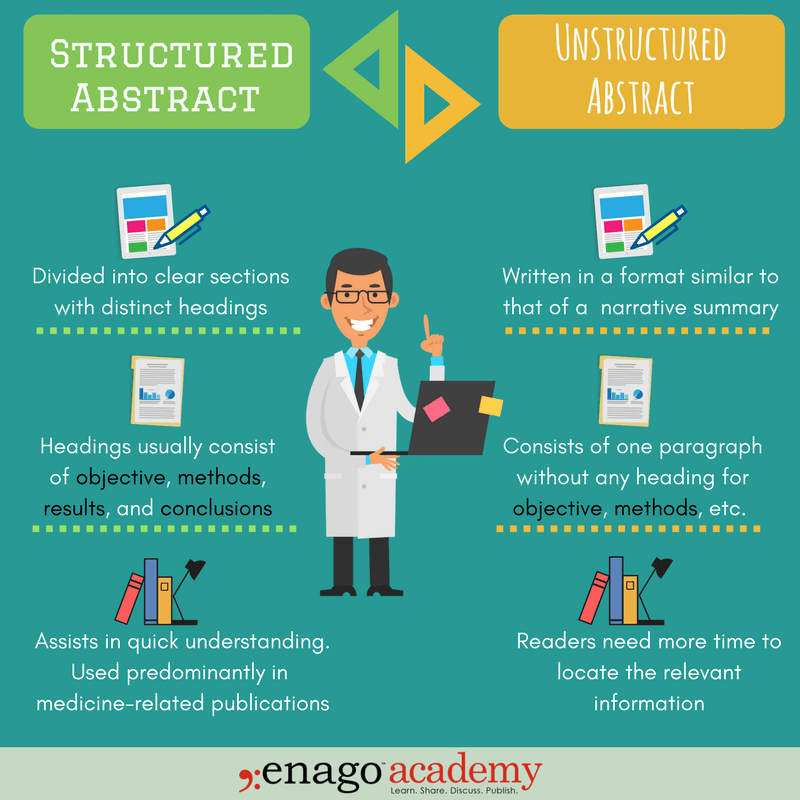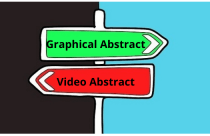Tips on Drafting an Impactful Structured Abstract

The abstract is in many ways the most important part of an academic paper. Peers and reviewers alike decide whether or not they will continue to read an article based on the abstract. It is important that academic writers choose the appropriate type of abstract for their study that will present their work concisely, informatively, and in a way that draws reader’s interest. While there are many styles to choose from, including descriptive, indicative, and informative, in this article, we will look at structured abstracts, how to draft them, and the importance of using this format.
Structured vs. Unstructured Abstracts
Traditionally, an abstract is written in a format much like an executive summary–it consists of one paragraph of continuous writing in narrative form. The abstract provides the readers with a summary of the research objective, methods used, results obtained, and conclusions. You may be familiar with abstracts like this:
Recent evidence has suggested that maternal mortality rates can be affected by hospital facility organization and design, including process design. The present study aims to investigate the role of process design in decreasing maternal mortality rates. This survey used a statistical analysis method performed by collecting data from 45 hospitals in the greater Orange County area between 2005 and 2008 which was during the time that new process design was introduced to half the target group with an aim towards reducing maternal mortality. Analysis found that improved process design in the treatment of hemorrhaging birthing mothers reduced maternal mortality by an average of 15%. Based on the findings of the current study, it seems that hospitals can improve patient outcomes by revisiting and improving their process structure and designs.
This format is known as an unstructured abstract. However, in the mid-twentieth century, the scientific community began looking for a new abstract format that could fit more information into the same amount of space, and the structured abstract was developed. Structured abstracts are generally favored by medicine-related publications, as they help health professionals quickly choose clinically relevant and methodologically valid journal articles.
Both types are used today and you should always follow the journal guidelines when you writing your abstract.
Elements of a Structured Abstract
Structured abstracts assist the reader in quickly understanding the findings of a study and unlike unstructured abstracts, are divided into clear sections with distinct headings. These headings typically consist of objective, methods, results, and conclusions. Unlike unstructured abstracts, structured abstracts do not require you to write complete sentences. Let us use the example of the unstructured abstract above and see what it looks like as a structured abstract:
Objective: To investigate the role of process design in reducing maternal mortality.
Methods: Forty-five hospitals were surveyed and data were collected in Greater Orange County between 2005 and 2008. SPSS regression analysis was performed. The analysis period coincided with the introduction of a newly designed process for treating hemorrhaging in birthing mothers.
Results: The analyzed process design was reduced maternal mortality by an average of 15%.
Conclusion: Hospitals may improve patient outcomes by redesigning their processes.
Note that each section is outlined clearly with a heading and the writing style is condensed. The reader is able to easily skip to the most relevant portion of the article and decide whether she or he wants to continue reading.
Some structured abstracts may request additional information such as background, design, participants, independent and dependent variables, limitations, and so on. These can be included as separate headings or information within the above applicable categories.

How to Write a Structured Abstract
Even with the elements of the abstract laid out in front of you, it is often challenging for a writer to summarize their thoughts clearly and succinctly. One way to write your structured abstract is to break down each category into a question.
BACKGROUND: What is the latest knowledge on the issue? Some key phrases to use here are: recent studies/although some clinical research has established x, the role of y is not well known.
OBJECTIVE: What did you want to find out? Some key phrases to use here are: This study examines/To ascertain/To identify/To understand
METHODS: How did you go about finding it? What type of methodology did you use? A quantitative study/a randomized controlled study/a qualitative survey/a literature review/a double blind trial
RESULTS: What did you find? What data or outcomes did you observe? You can use phrases such as X was observed because of Y. Do not be vague! State exactly what you found.
CONCLUSION: What did your results tell you? Did you find out what you wanted? Why or why not? What should be studied next? Use phrases such as X was statistically significant, Variable A has a negative correlation with Variable B, etc.
The abstract should highlight the most important information you found out–it’s a very brief and informative summary. It should not be a teaser! Avoid phrases like “data is analyzed using a method discussed in the paper”, “the significance of the study is discussed” or “based on the results abc, conclusions are drawn.” Instead, state clearly that “a double-blind study was conducted” or “the results of the study show that oral administration of glucosamine can have a statistically significant impact on diabetes management.” Finally, always follow the specifications of the journal you are submitting to and choose the format most appropriate for your study.
Do you prefer structured or unstructured abstracts? What challenges do you encounter in writing abstracts? Let us know in the comments section below!










Great Work !!!! <3